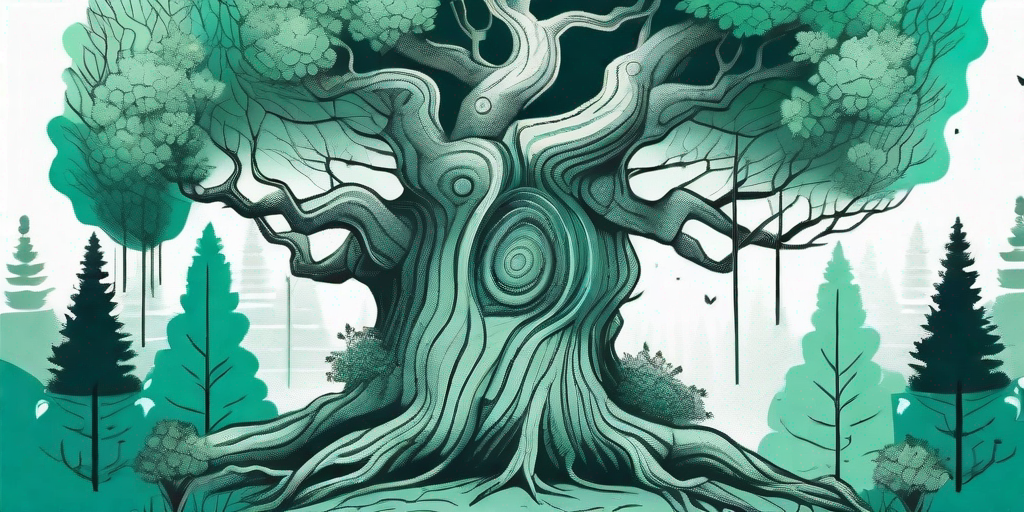
In the grand theatre of nature, trees play a leading role. They're the tall, silent types, always rooted in their spot, come rain or shine. But trees have secrets, and one of their most intriguing mysteries is the phenomenon of burls. These peculiar growths, which can look like giant warts or fantastical sculptures, have puzzled and fascinated humans for centuries. But what exactly are burls, and why do they form? Buckle up, dear reader, because we're about to embark on a thrilling journey into the secret life of trees.
What on Earth is a Burl?
Let's start with the basics. A burl is a tree growth in which the grain has grown in a deformed manner. It's like a tree's version of a bad hair day, but instead of a few unruly strands, you get a massive, knobbly lump. Burls can vary in size from as small as a walnut to as large as a car. Yes, you read that right. A car-sized bad hair day. Only in the world of trees, folks.
Despite their often grotesque appearance, burls are highly prized by woodworkers and artists for their unique patterns and colors. When cut open, a burl reveals a swirling, marbled wood grain unlike anything you'd find in normal wood. This makes them ideal for creating furniture, sculptures, and other decorative items.
Why Do Trees Get Burls?
Now that we've established what a burl is, let's delve into the why. The exact cause of burls is still a topic of debate among scientists. Some believe they're caused by environmental stressors, such as injury, viral or fungal infections, or insect infestation. Others think they may be a genetic mutation. In any case, a burl forms when the tree's growth cells start dividing haphazardly, creating a dense mass of wood.
Interestingly, burls don't seem to harm the tree. They're like benign tumors, not causing any apparent damage but certainly adding a touch of character. Some trees live with their burls for hundreds of years. So, if you're a tree with a burl, there's no need to worry. You're not in any immediate danger, and you've just become a whole lot more interesting to humans.
How to Spot a Burl
Now that you're a budding burl enthusiast, you might be wondering how to spot these fascinating growths in the wild. Well, it's pretty simple. Look for a large, round protrusion that looks out of place on the trunk or branches of a tree. Burls often have a rough, textured surface, and they can sometimes resemble a large knot or gnarl.
Remember, though, that not all burls are created equal. Some are hidden beneath the bark, revealing their presence only when the tree is cut down. These are known as latent or dormant burls. So, the next time you're out in the woods, keep your eyes peeled. You never know when you might stumble upon a hidden treasure.
The Value of Burls
As we've mentioned, burls are highly sought after by woodworkers and artists. This is because the wood inside a burl is incredibly dense and resistant to splitting, which makes it ideal for carving. Plus, the unique grain patterns can create stunning visual effects.
However, the value of a burl goes beyond its practical uses. Burls are a testament to a tree's resilience, a visible sign of the struggles it has faced and overcome. They remind us that beauty can be found in the most unexpected places, and that even the most ordinary-looking tree can harbor extraordinary secrets.
FAQs
Are burls harmful to trees?
While burls may look alarming, they don't appear to harm the tree. They're like benign tumors, causing no apparent damage to the tree's health or lifespan.
What causes burls to form?
The exact cause of burls is still a topic of debate among scientists. Some believe they're caused by environmental stressors, such as injury, viral or fungal infections, or insect infestation. Others think they may be a genetic mutation.
Can you remove a burl from a tree?
It's generally not recommended to remove a burl from a tree, as this can cause significant damage and potentially expose the tree to disease. Plus, burls add character to a tree, so why not let it keep its unique feature?
Conclusion
So there you have it, the secret life of trees and the fascinating world of burls. These peculiar growths are a testament to the resilience and mystery of nature, a reminder that even the most familiar things can surprise us. So the next time you're out for a walk in the woods, take a moment to appreciate the silent, towering giants around you. Who knows, you might even spot a burl or two.
And remember, in the words of the great naturalist John Muir, "Between every two pines is a doorway to a new world." So go ahead, step through that doorway and discover the secret life of trees.















